HP EliteBook 8570w Notebook Review: The Other Side of the Coin
by Dustin Sklavos on December 18, 2012 12:01 AM EST- Posted in
- Laptops
- Systems
- AMD
- HP
- Mobile Workstation
- Ivy Bridge
- GCN
- FirePro
Workstation Performance
As the mobile workstation results we've accumulated thus far are fairly limited, I'm including my entire workstation result spreadsheet to give you at least a baseline of how the HP EliteBook 8570w stacks up with its entry level workstation GPU, the AMD FirePro M4000.
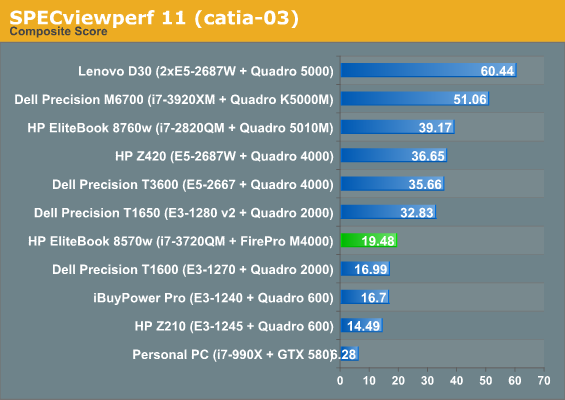
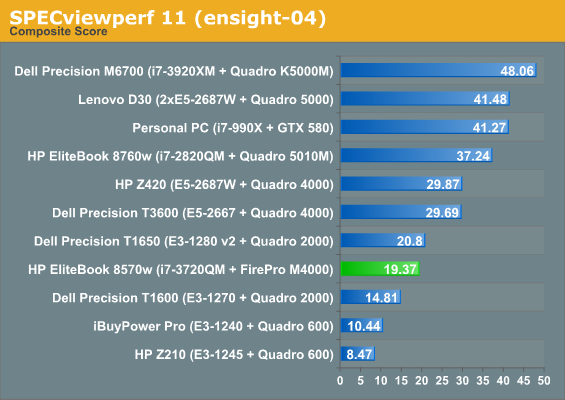
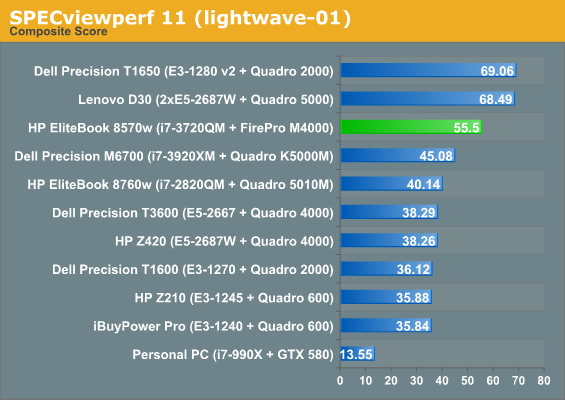
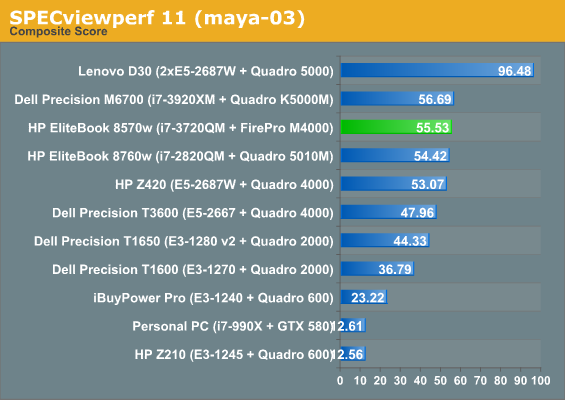
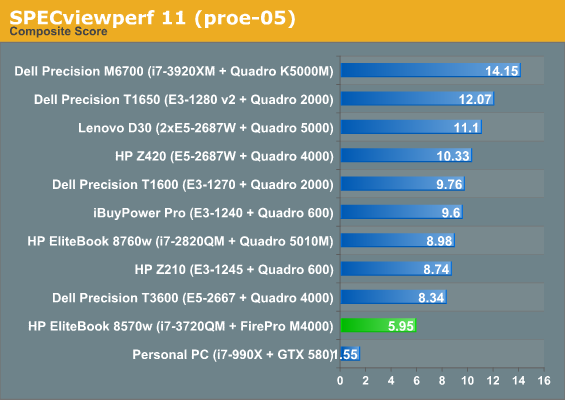
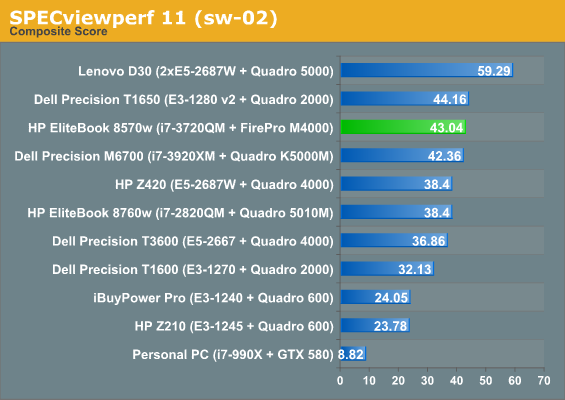
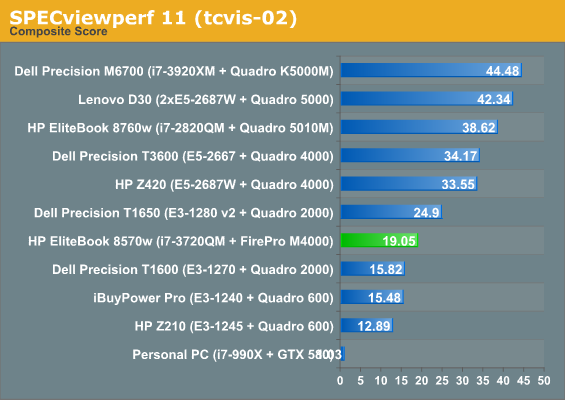
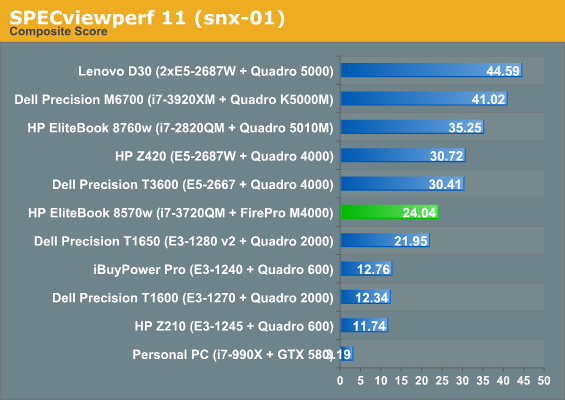
As you can see from our SPECviewperf results, the FirePro M4000 is potentially a killer value. The performance on offer in Maya, in particular, is frankly outstanding and does line up somewhat with how I've seen the desktop GCN-based FirePros perform. Overall performance is kind of all over the map, and when the M4000 loses it can lose pretty big. Bottom line, if you have need of a workstation card, it's good to tailor your hardware selection to the applications you intend to use.

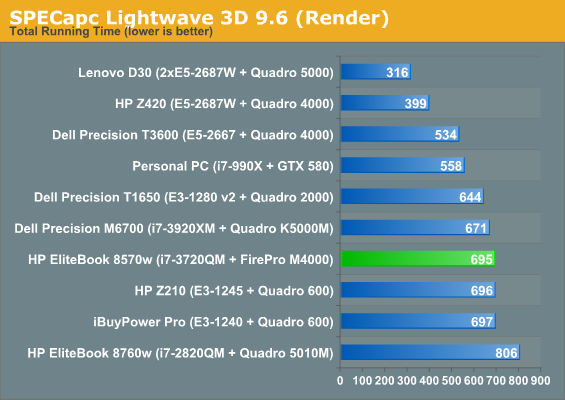
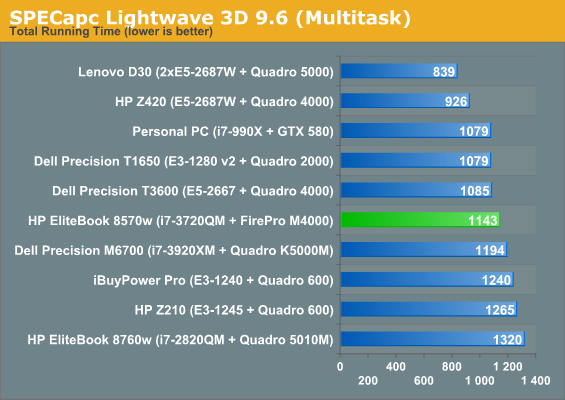
With Lightwave 3D performance almost exclusively CPU bound, the EliteBook 8570w loses a little bit of steam but still remains fairly competitive.










54 Comments
View All Comments
Kevin G - Tuesday, December 18, 2012 - link
There is little difference between the drivers on consumer level GPU's under OS X and the workstation class video card drivers under Windows. That is the key difference between workstation and consumer level GPU's: drivers. Take a look at the cross platform software and the software vendors do certify the OS X drivers.Beyond that the other differences between consumer and workstation GPU's are often related to GPU compute. nVidia only offers full speed GPU compute on their Telsa cards and have even started to nerf the Quadro line up (though not as much as Geforce cards based upon the same GPU die).
I've been able to spot two other minor differences between consumer and workstation cards. The first is hardware based line anti-aliasing and 10 bit color support. Under OS X, both this AA technique and 10 bit color output are provided on consumer cards.
The last difference would be the cards themselves. Workstation cards due tend to have additional outputs (either DL-DVI or DP) and more on board memory for the GPU. For a laptop this isn't as critical but worth noting for desktop systems.
ananduser - Tuesday, December 18, 2012 - link
You can add the fact that Win under bootcamp runs relatively poor compared to a native machine. You lose a good 25%(at least) on battery life and no optimus-type switching. The drivers are also generic and have an impact on the system's overall IOPS(due to drivers). All in all not a good machine at all. It's good for the Apple user that needs sporadic native windows access on his machine and that's just about it.damianrobertjones - Tuesday, December 18, 2012 - link
Please mention that you can purchase an extended BB09, CC09 or SR09 battery for this device. BB09 and CC09 providing the most battery life.damianrobertjones - Tuesday, December 18, 2012 - link
P.s. Anyone planning on buying should really consider re-applying the thermal compound as the basic application isn't the best in the world.Flunk - Tuesday, December 18, 2012 - link
That is true of every notebook I've ever seen.ijozic - Tuesday, December 18, 2012 - link
Just two points worthy of mention regarding the Dell..First, it was first offered with the IPS screen, as well, but most (if not all?) were plagued by blue tint issues so they are no longer offered (I'm surprised if the HP doesn't have the same problem as I'd presume the screens are pretty much the same?). So, if a better stock of displays is obtained, they might be offered again.
Second, it seems to have a much better cooling system as it also offers the XM CPUs.
Oskars Apša - Tuesday, December 18, 2012 - link
Why not review workstations with 3D models and drawings that are made by some interior and graphics designers, even architects?I as a designer would see value if you had benchmarked programs like AutoCad, 3DS MAX and Corel draw with real life models, scenes and drawings.
I don't see value in primitive benchmarking that is made upon models that ar made by some benchmark "manufacturer". That might be good for game designers at most.
Also, screens of benchmarked 3D and other objects are a must.
lx686x - Tuesday, December 18, 2012 - link
SPECviewperf is pretty much a standard for workstation class GPU's so I don't see a problem here.You need a benchamrk not some random scenes.
Oskars Apša - Tuesday, December 18, 2012 - link
I disagree. By look the SPEC provided models and scenes look like random leftover highscool projects. Models are primitive texture vise and the same can be said about models themselves.The only good models are provided for Siemens, but that isn't the most used program by designers, or is it?
A standart made by some company for 6 year old console game development doesn't mean it is sufficient.
lx686x - Tuesday, December 18, 2012 - link
It doesn't matter, if it scores lower in SPEC in will also have lower FPS in real programs as well.If you know any other BENCHMARK then suggest it...